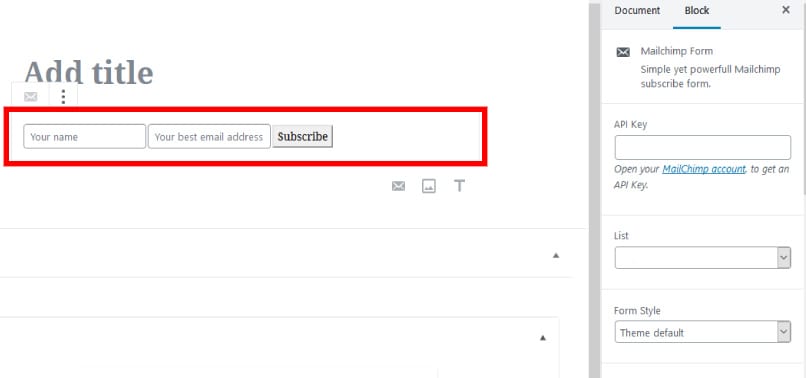Have you ever needed to add a map to your website, but it was just…
December 8, 2018, marked a significant milestone for WordPress’s evolution: it was the day WordPress released its fifth version, which comes with many improvements and new features. By far, the most intriguing novelty is the block-based editor called Gutenberg.
The classic editor did an excellent job for many years, but it’s obsolete in 2018. Certainly, it had many shortcomings, but it did help many bloggers craft awesome blog posts. Some WordPress users may not like the new editor, and they will continue using the classic one. There is nothing wrong with that, but the future is Gutenberg, like it or not! It is here to stay, and you’d better start learning how to get the most from its features.
In this post, I not only share some tips to familiarize yourself with Gutenberg but also suggest a simple yet powerful plugin compatible with the new editor.
Gutenberg: A Step Forward
The truth is that Gutenberg isn’t the best editor. However, it is a huge step forward, and it will be considerably improved in the near future. It has intrigued tons of theme and plugin developers and raised many questions regarding its compatibility with existing themes and plugins. In spite of these problems, sooner or later, you will have to update to the latest WordPress version, and you will use Gutenberg.
Newsletter Gutenberg Block for MailChimp
Gutenberg is a visual-based editor. Users have at their disposal a variety of blocks to design a web page, and it comes with enough blocks to craft good blog posts. You have Image, Heading, Gallery, List, Video, and Inline Image blocks that are jam-packed with impressive features. However, there aren’t enough elements for extended functionality, such as advanced marketing, analytics, or e-commerce.
Newsletter Gutenberg Block for MailChimp is a plugin that became available for download on the WordPress repository on November 23, 2018. Its role is simple but genuinely useful: to collect email addresses and integrate them into a MailChimp list. It works similar to other Gutenberg blocks, so there is no problem using it if you aren’t too keen on collecting emails or using the MailChimp interface.
Why Use Newsletter Gutenberg Block for MailChimp
I hope that email marketing is more than a fancy term for you. If you haven’t leveraged the power of email marketing, you have made a huge mistake.
Collecting email addresses is a first step in making money with email marketing. Even though email is the oldest marketing channel and some consider it obsolete, the reality is that it has the highest return on investment from all marketing channels. Additionally, an effective email marketing strategy brings many advantages, such as:
- Nurturing your client relationships
- Increasing brand awareness
- Providing value to your customers and leads.
Understanding the potential of a list of email addresses is simple, but collecting these addresses is way more complicated. Unfortunately, many entrepreneurs, marketers, and WordPress users prefer to buy lists, which is totally ill-advised. Never buy an email address! Instead, convince people that you can provide value and ask them to give you permission to store their email addresses and contact them via email.
Newsletter Gutenberg Block for MailChimp is a reliable tool for collecting email addresses. It works seamlessly with the Gutenberg editor, and the form generated is not-obtrusive – a big thumbs-up for this aspect. Sadly, many websites look like collections of pushy forms to collect your email address, but yours won’t fall into this category if you use this plugin.
How Newsletter Gutenberg Block for MailChimp Works
Update to WordPress 5.0 to unleash this plugin or install and activate the Gutenberg plugin to make sure it works properly. Next, head to the WordPress repository and install and activate Newsletter Gutenberg Block for MailChimp. Once activated, go to Posts > Add New and use the Gutenberg editor.
To see Newsletter Gutenberg Block for MailChimp in action, click on Add a Block and select MailChimp form.
It will generate a customizable subscription form; all the configuration options are in the Blocks area.
Add your MailChimp API key into the API key form to connect the plugin with your MailChimp account. A considerable advantage of this plugin is the ability to use various lists of email addresses. The emails of the fresh subscribers won’t mix with the emails of loyal clients, and your MailChimp account won’t be a complete mess.
The default design of the form is pretty discrete, but this style can’t match every layout. The plugin developers are aware of this fact, and they are working on adding new designs. Minimal, Material Design, Round, and Square are templates that will delight users shortly.
The micro-copy seems to lack weight, but it plays a vital role in improving the conversion rate. This plugin allows you to add your own copy on the button or in the name and email fields. You can also write a cool success or error message for new subscribers if you want to be different from your competitors. Much more, you can add your personal touch by creating a humorous message for people who didn’t complete the form correctly or have already subscribed to you. However, the plugin comes with standard copy, so you can use it without doing any customization work if you wish.
Pros vs. Cons
Is Newsletter Gutenberg Block for MailChimp worth your attention? Yes, if you are using Gutenberg and want to easily collect emails, this is the plugin for you. The advantages of using this plugin are substantial:
- It works seamlessly in the Gutenberg editor. You could think that it’s a default Gutenberg block and not a separate plugin
- It does what it says. The plugin collects email addresses and interacts with your MailChimp account
- It has enough features to personalize the form
- It’s lightweight, so it won’t slow down the site’s loading speed
That said, nothing manmade is perfect, and there is room to improve Newsletter Gutenberg Block for MailChimp. Here are a few suggestions for the versions to come:
- It needs more form styles. A few are under construction, and I am eager to test them. Altogether, more is better when it comes to stylizing options.
- It needs more customization features. Every webmaster wants to be original and distinguishable. This dream can’t come true without a vast array of tailoring options.
Final Verdict
Newsletter Gutenberg Block for MailChimp is a simple and yet powerful plugin that promises to help you to collect email addresses. It’s impressive that it looks like a built-in Gutenberg block—congratulation to the developers. Altogether, a few more customization options might convince more WordPress users to give it a try.










